On May 17–18, 2025, the Tsinghua PBCSF Global Finance Forum was successfully held in Shenzhen, Guangdong Province. On the morning of the 18th, Session VII, titled “2025 China Economic Outlook and the Release of the China Financial Policy Report 2025,” was successfully convened. Centered on the release of the China Financial Policy Report 2025, the session focused on the current practices and future directions of China’s financial development. Leading experts, scholars, senior policymakers, and industry leaders gathered to explore the pathways and strategies for building China into a financial powerhouse and promoting high-quality economic development.
The session was moderated by He Haifeng, executive editor of the Program for China Financial Policy Report at Tsinghua PBCSF and former chief economist of Guotai Junan Securities Co., Ltd. The China Financial Policy Report 2025 was officially released by Ding Zhijie, director general of the Financial Research Institute of the People’s Bank of China. Keynote speeches and panel discussions featured Wang Yiming, vice chairman of the China Center for International Economic Exchanges and former vice minister of the Development Research Center of the State Council; Wang Yongli, co-chairman of Digital China Information Service Group Co., Ltd.; and Li Yao, member of the Standing Committee of the 14th National Committee of the Chinese People's Political Consultative Conference (CPPCC) and member of its Economic Affairs Committee.

[Photo: HE Haifeng]
He Haifeng opened the session by introducing the Program for China Financial Policy Report. Jointly launched by Tsinghua PBCSF and the Financial Policy Research Center at the Chinese Academy of Social Sciences, the program upholds the mission of “Rooted in China, connecting with the world” since its inception. For 15 consecutive years, the China Financial Policy Report has comprehensively presented major themes and policy developments in China’s financial sector, earning recognition from policymakers, academia, and markets. As the first authoritative, systematic, and bilingual publication on China’s financial policy landscape, the China Financial Policy Report has been released to audiences both at home and abroad. The project team includes senior advisors, expert researchers, and interns. Since December 2019, the team has partnered with Xinhua Finance to launch the Annual Top 10 Financial Policies Awards, covering global, national, and local-level initiatives that shape the evolution of the financial system. Six editions of the awards have been released to date.
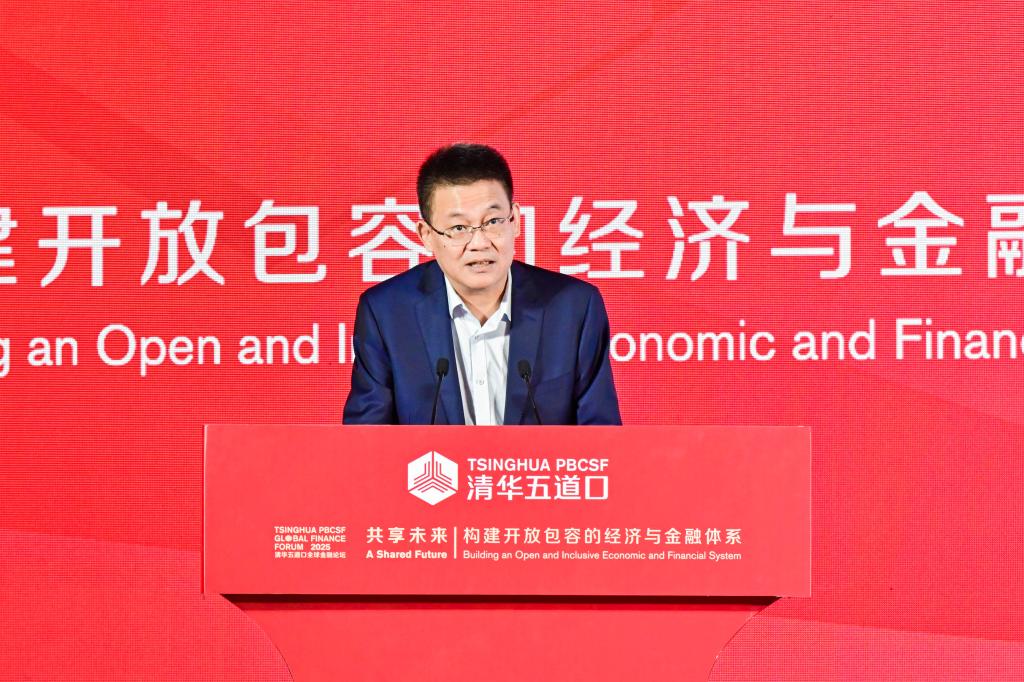
[Photo: DING Zhijie]
Ding Zhijie released the China Financial Policy Report 2025 (hereinafter referred to as “the Report”) and presented its main content. He noted that in 2024, the Central Committee of the Communist Party of China made systematic plans to accelerate the establishment of a modern financial system with Chinese characteristics. In response, the financial sector actively implemented efforts to steadily advance institutional reform, financial opening-up, and service to the real economy. On this basis, the Report, under the theme “Deepening Reform of the Financial System and Accelerating the Development of a Modern Financial System with Chinese Characteristics,” analyzes the challenges and opportunities facing China’s current financial development, elaborates on the development path with Chinese characteristics, provides a comprehensive review of progress in building the six core components of the financial system in 2024, and offers a forward-looking perspective on future financial system reform across areas such as regulation, institutional frameworks, and opening-up.
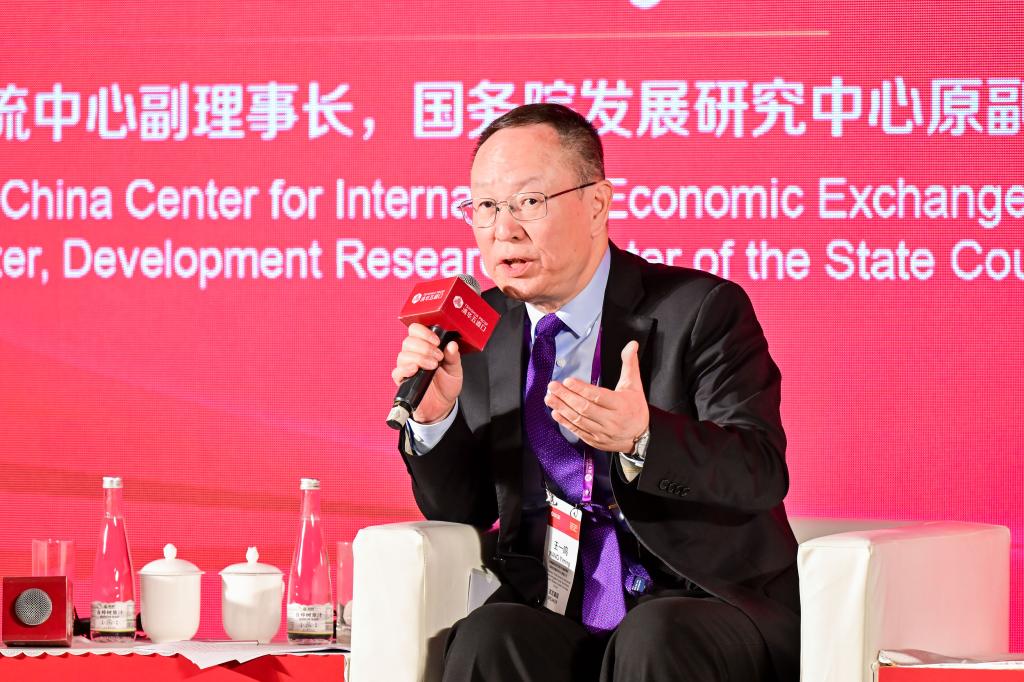
[Photo: WANG Yiming]
Wang Yiming delivered a speech on the theme “Prospects for China’s Economic and Financial Development Amid Tariff Shocks,” in which he analyzed the rationale and motivations behind the tariff war initiated by Donald Trump and examined its impact on China. He emphasized that Trump’s tariff campaign was driven by three core objectives: first, to rebuild U.S. manufacturing by promoting industrial reshoring through protectionist tariffs; second, to ease fiscal pressures in the United States by increasing tariff revenue; and third, to force other countries into making concessions and to reshape global trade and financial rules in a way that favors U.S. interests.
Wang went on to analyze the impact of the tariff war on China, noting that it has significantly increased the operating costs of export-oriented firms targeting the U.S. market. Furthermore, the Trump administration’s erratic policy stance has disrupted financial market stability. Given the limited effectiveness of the current tariff measures, the U.S. may intensify pressure on China in other domains such as the economy, finance, and foreign trade. In closing, Wang stressed that while the tariff war poses challenges, it also brings opportunities. Historically, every major external shock has triggered deep reforms and structural transformations, revealing the resilience and vitality of the Chinese economy. The key challenge now lies in how China can undertake effective structural adjustments in response to the current round of shocks.
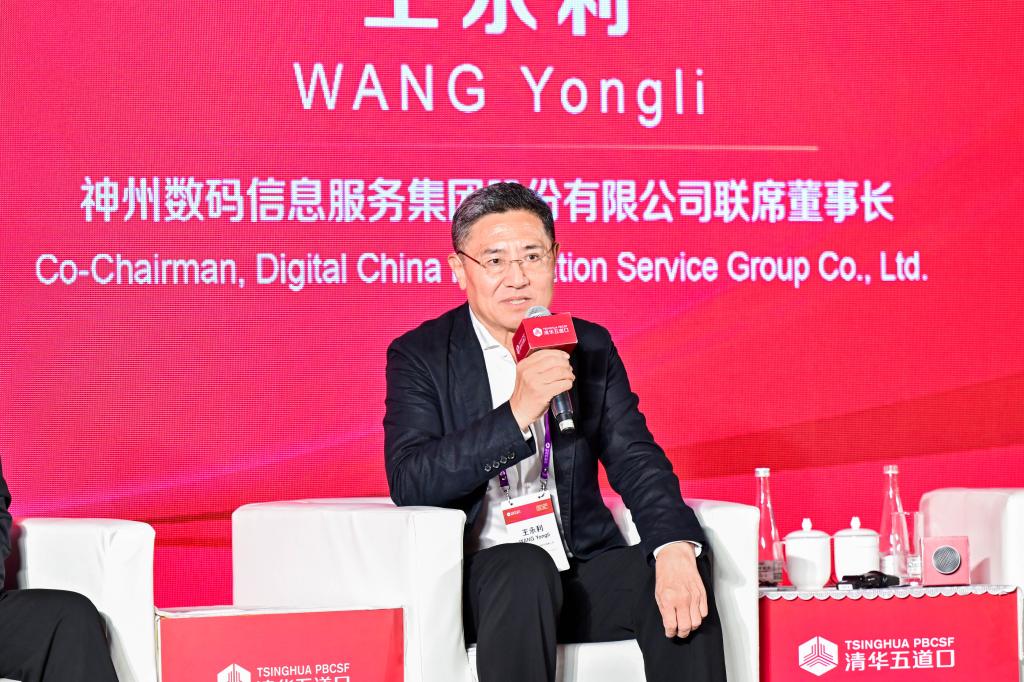
[Photo: WANG Yongli]
Wang Yongli spoke on the topic of “Improving the Efficiency of Cross-Border RMB Payment and Settlement,” underscoring that RMB cross-border settlement is not only critical financial infrastructure but also a key driver of progress. He noted that China has made substantial progress in this area, including advancing interbank payment and clearing systems, developing and expanding the Cross-Border Interbank Payment System (CIPS), strengthening collaboration with SWIFT, and promoting mobile payment innovations.
Wang highlighted the emergence of new models in the field of cross-border monetary settlement, where crypto assets have driven the evolution of fiat-backed stablecoins, which in turn have fueled the broader development of digital and crypto assets. In particular, stablecoins pegged to sovereign currencies are reshaping both the forms and operation of money, prompting a need for more accurate understanding of the essence, mediums, and forms of currency. At the same time, drawing on the mode and technologies underlying stablecoins, technological innovations are needed to enhance operational efficiency, reduce costs, and manage risks. Wang emphasized that the current proliferation of stablecoin types calls for more unified frameworks for the monetary system and highlights the urgency of accelerating the digitalization of sovereign currencies. The emergence of new technologies, models, and business formats offers strong impetus for advancing RMB cross-border payment and settlement.
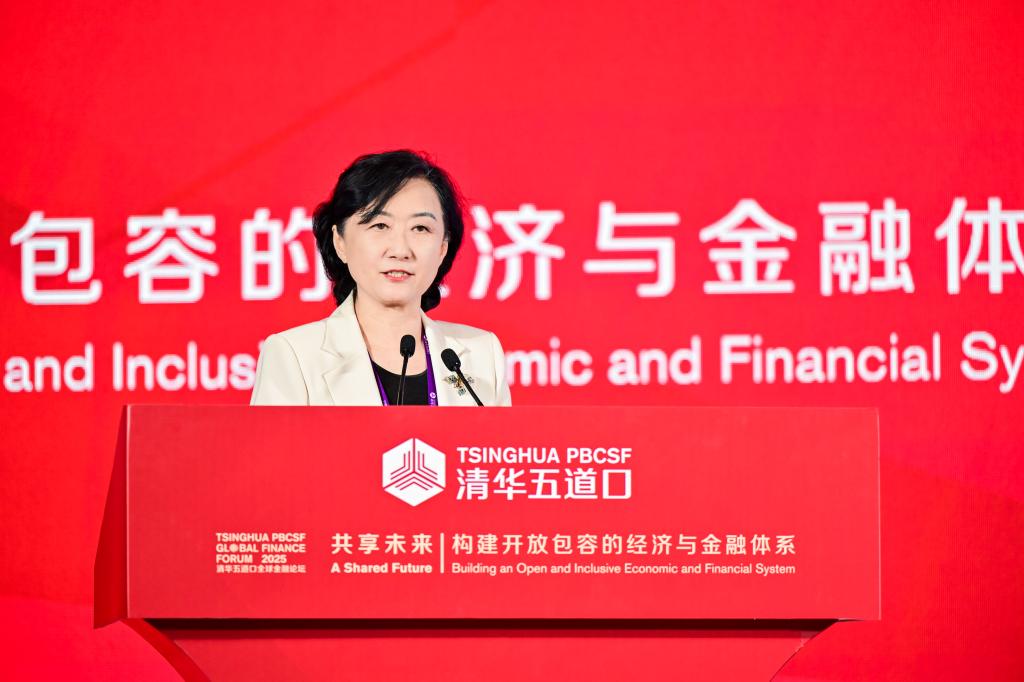
Li Yao delivered a speech on the theme “Implementing the National Strategy of Building a Financial Power and Effectively Advancing High-Quality Financial Development,” in which she analyzed how local governments can contribute to building China into a financial powerhouse from five key perspectives. She emphasized that local finance serves as a crucial anchor and vital network within China’s financial development strategy. It is deeply integrated into the circulation of regional economy and plays an important role in implementing national financial strategies, including “Five Major Financial Articles”.
She stressed the need for local authorities to fully implement central policy decisions and improve coordination mechanisms between central and local financial regulators. First, they should focus on fostering emerging industries and upgrading traditional sectors to promote technology finance. Second, they should prioritize green transition and ecological development to advance green finance. Third, they should support livelihood-related services and the development of micro and small enterprises to improve inclusive finance. Fourth, they should respond to population aging by developing pension finance. Fifth, they should promote the digital economy and financial digitalization to advance digital finance.
In conclusion, Li emphasized that financial regulators must faithfully implement the central leadership’s strategic plans for building a financial power, while local governments should contribute by effectively delivering on “Five Major Financial Articles” to better support the real economy and China’s broader economic and social development.
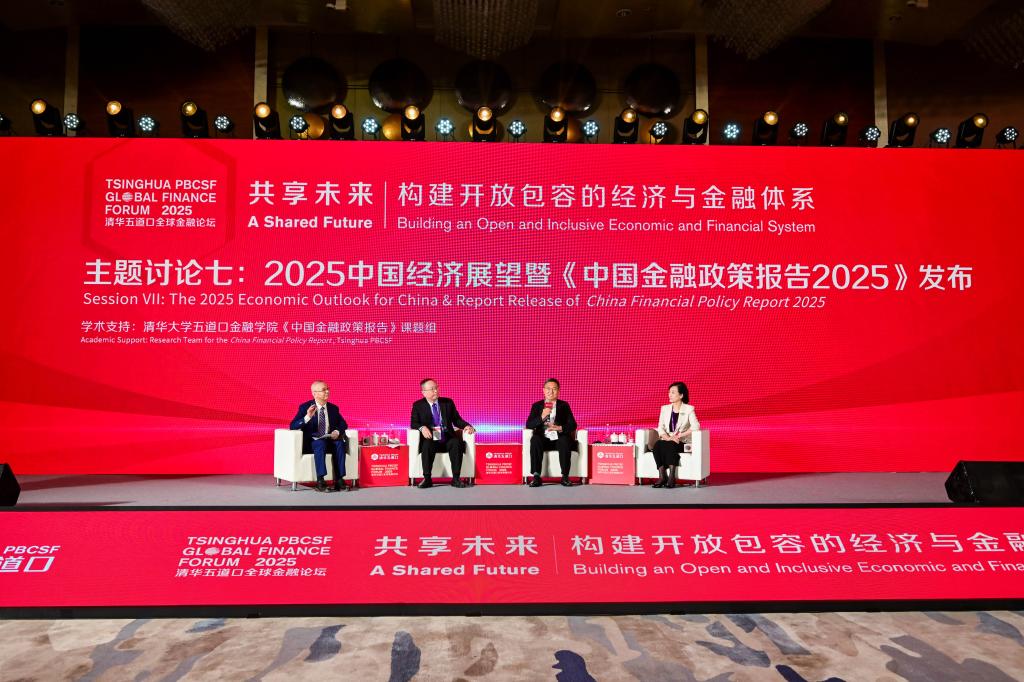
Following the keynote speeches, the speakers joined a roundtable discussion on topics such as “Priorities in current economic development”, “The direction of Fintech development in China over the next three to five years”, and “How local governments can support the sustainable development of technological innovation.”
The Tsinghua PBCSF Global Finance Forum is a flagship forum launched by Tsinghua University in 2014. It focuses on new trends, practices, and ideas in global financial development, and aims to contribute insights for achieving high-quality development in finance and advancing China’s strategy of building a financial power. The forum is widely recognized as one of China’s most influential academic platforms with growing international visibility.